Kanika Kaushal is currently a Masters student at the University of Waterloo School of Architecture. She visited Old Delhi this past summer to conduct research for her thesis entitled De-Coding Urbanity. More information about her work can be found in this THESIS WORK post from last winter.
The walled city of Old Delhi, India is a complex amalgamation of Mughal, Colonial and post-Colonial architecture. This overlap has resulted in a rich city fabric and networked cultural landscape that form the identity of the city, which can be defined as it’s urbanity. The foundational logic which guided the construction of the urban fabric informs the character of the city, as well as a way of life of the people living there. The essence of the city is the residential settlements which generate the vernacular quality of the fabric. However, over the past ten years, Old Delhi has seen a constant decline in the percentage of this residential typology. This is primarily due to excessive commercialization and unauthorized construction in the city, which are forcing residents to move out in search of a better quality of life. The government and planning departments are working on redevelopment plans for the city. The question is, will these generate the same urban character that we see today.
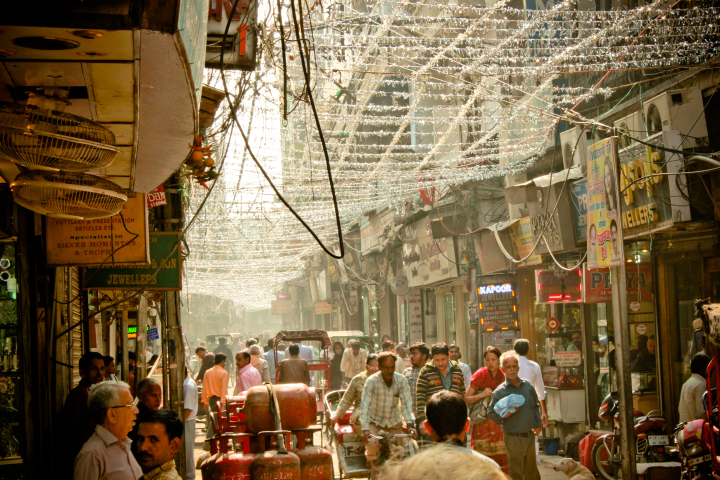
Fig 1. Jeweller’s Market in Old Delhi ‘Dariba Kalan’
The population of Old Delhi is highly community based enabling the development of relationships on a personal level. Families live together for generations in courtyard houses that have shops on the lower floors and residential spaces above. People live walking distances from their workplaces. Everyone knows almost everyone. The rooftop terraces of the houses are connected to one another and create a visual network that enhances interaction, both within and between neighborhoods, at a scale that is not imaginable on the street. The terraces form a entirely new realm of public space. This creates a sense of bonding that is missing in the modern cities that are being designed today.

Fig. 2 Terraces as a whole new realm of public space
At the psychological level, a person standing at any point in the city is connected to the city through landmarks, thus streets not only tie spaces together but also guide movement. The filters within the fabric help protect the people and their culture. The screens in the houses offer privacy and security to the occupants.
When I visit Old Delhi, I feel a sense of community that generates the vitality of the city and creates a different environment, unlike what we see in New Delhi or any other contemporary city. The urban fabric has always caught my attention and caused me to wondered how it creates socio-cultural space where families can live with each other and form closely knit neighborhoods.
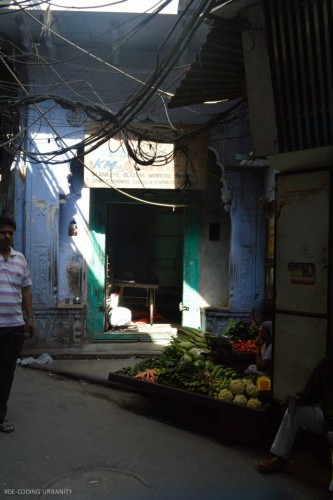
Fig. 3. Threshold Spaces
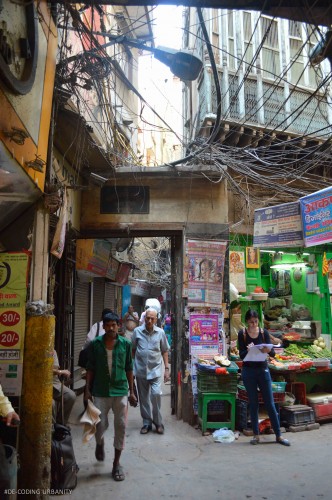
Fig. 4. Gateways
The architecture of the city has the ability to engage the meta-physical state to offer a fulfilling experience. The spatial logic of the fabric generates a strong sensory experience that provokes reactions in an individual’s body and mind. The different spaces in the city have the ability to alter moods, produce a sense of warmth; through sights, smells,and sounds that can then be retained within a person’s memory. Phool Mandi or the flower market brightens your day with the smell of flowers, Khari Baoli is a spice market that can leave you sneezing like never before and there are neighbourhoods like – Katra Neel and Kinaari Bazaar ideal for wedding shopping.

When revisiting a space at another time, architecture can trigger the same feelings and memories within the passer-by and cause them to recall moments and past experiences. Old Delhi’s architecture works with the occupants’ intellectual, emotional and instinctual life through a global approach, not a stylistic one. By making the occupant of the city feel beyond the physical plane, the city builds a relationship with all the occupants and also among them.
The strength of a good design lies in ourselves and in our ability to perceive the world with both emotion and reason. A good architecture design is sensuous. A good architecture design is intelligent.
Peter Zumthor
Peter Zumthor emphasizes on the importance of experiencing, feeling alive and thinking why and how do we dwell as humans. Old Delhi for me does exactly that. There is greater face-to-face interaction and occupants relate to the city in different ways. The city’s structure helps in understanding the larger world and how different systems interact within the city.
The chaotic looking, yet rule-based street network system forms the backbone of the city’s urban design. It is responsible for controlling climate, acoustics as well as the level of privacy and social order. For example at a primary street a person experiences 90 Decibels of sound level while in a courtyard house it lowers to 55 Decibels and below. The streets not only control sound levels but the temperatures as well. As we move into the fabric, the street widths reduce to as low as one meter. These remain shaded on the hottest days of summer. The tertiary streets include threshold spaces at the entrance of each neighborhood which is then followed by an entrance gate leading to the courtyard houses. The streets thus dictate the urban framework as well as the program.
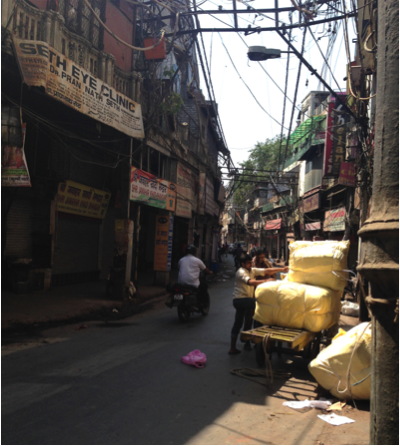
Fig. 5. Secondary Streets
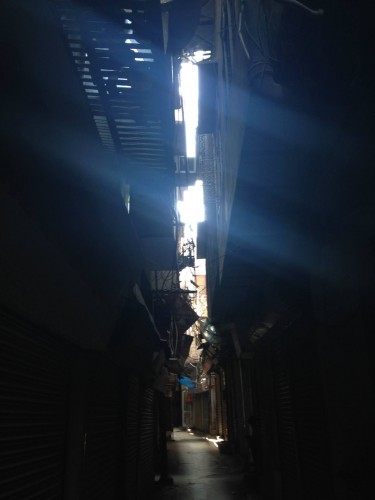
Fig. 6. Local Street

Fig. 7. A Courtyard house in one of the densely populated neighborhoods or ‘Katra’ Each room caters to a separate family of approximately four people. The central open space is public and highly social shared by all the people.
A Katra can be defined as a micro-level segregation within the fabric that is composed of both residential and commercial activities and accessed from a street through a single doorway. This urban block typology is a typical element in domestic Muslim Architecture of Delhi. Although the origin of the name is disputed, it appears to have originated from the word ‘kharvataka’, meaning a walled enclosure. The term Katras and Mohallas, generally used interchangeably, refer to quarters that represented the major form of residential organization in Old Delhi. Historically, these spatial precincts were classified and differentiated based on caste or craft and were headed by chiefs of caste councils. Thus, these micro-communities were largely self-reliant in the sense that each one formed a virtually autonomous social unit which embraced a representative cross section of society and established, controlled and maintained the basic shared facilities.
Looking at the new houses being constructed in the city, it is amazing to see that, in spite of tendencies to ignore spatial by-laws, there are a certain set of rules that still persist in the city. These unsaid, implemented codes and rules generate the energy that the city lives with. The houses that are built without consideration to the rules show symptoms. These should be read as a message. This message expresses the soul of the family living in the house and thus carries a symbolic value. If we together believe in the values, they will show their effect. This is very strongly exhibited in Old Delhi.
Unfortunately, over the years Old Delhi has witnessed rapid commercialization and encroachments which are slowly erasing the city’s spirit. This can be seen as a ‘Spiritual Anemia’. Like Old Delhi, many other contemporary cities today lack a human quality and scale, which needs to be addressed. I wanted to learn these qualities though observations of Old Delhi in an effort to preserve a culture that is slowly dying. How to preserve historic centres and their embedded urbanism is an important question of urban design. Planning departments and organizations primarily focus on specific heritage sites instead of understanding and preserving the urban fabrics embedded spatial codes. Hence, the goal of my thesis is to address the need for a planning model that illustrates the framework of the residential settlements of historic cities that are undergoing rapid transformation or are under process for redevelopment to architects, planners and organizations involved in urban development. This model provides sets of rules and values that anticipate design solutions that can act as a paradigmatic model for Old Delhi and other historic cities thereby facilitating the preservation of its cultural and architectural urbanity.
Fig. 1. Source: Linus Kallman – Travel in India – Delhi
Fig. 2. Source: www.Delhidallying.com
Fig. 3. Photograph by Author.
Fig. 4. Photograph by Author.


Leave a Reply